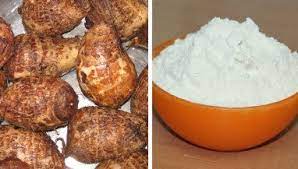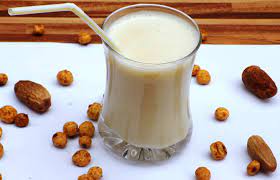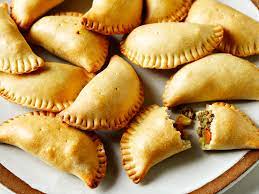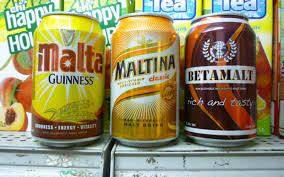
Cocoyam is a common name for more than one tropical root crop and vegetable crop belonging to the Arum family (also known as Aroids and by the family name Araceae) and may refer to: Taro (Colocasia esculenta) - old cocoyam. Malanga (Xanthosoma spp.) - new cocoyam.
Cocoyam (Colocasia esculenta (taro) and Xanthosoma mafafa (tannia) is cultivated mainly for its corms and cormels. It ranks third in importance after cassava and yam among the root and tuber crops cultivated and consumed in Nigeria. Nigeria is the largest producer of cocoyam in the world with an annual production of five million, four hundred and ninety thousand (5,490,000) metric tonnes, equivalent to forty-five point nine percent (45.9%) of world production and seventy-two point two percent (72.2%) total output of cocoyam in West Africa.
Cocoyam is generally grown on upland, well drained, fertile soils. Mixed cropping with maize and yam is common.
Cocoyam / Taro root plays an important part in the antioxidant activity in our bodies. High level of vitamin A, vitamin C, and various other phenolic antioxidants found in taro root help to boost immune system and help eliminate dangerous free radicals from our system.
Free radicals are actually the dangerous byproducts of cellular metabolism that may result in healthy cells to mutate and turn into cancerous cells.
By eliminating these free radicals, our general health is almost guaranteed. Cryptoxanthin, which is found in taro root, is directly related to a lowered chance of developing both lung and oral cancers.
Cocoyam is extremely beneficial for overcoming rheumatoid arthritis because low levels of vitamin B6 are related to increased signs of rheumatoid arthritis (RA), like more severe pains.
Several researchers conclude that people with RA require comparatively more vitamin B6 than healthy people because they experience constant muscle aches and joint pain, owing to chronic inflammation. Vitamin B6 benefits include curbing pain and it can be useful in supplement form for controlling aches in the muscles and joints owing to arthritis.
Cocoyam consists of considerable amount of potassium, which is considered essential minerals that are essentially needed to remain healthy and efficient.. Potassium not only enables healthy fluid transfers between membranes and tissues throughout the body, but also helps to relieve stress and pressure on blood vessels and arteries.
By relaxing the veins and blood vessels, blood pressure can be reduced and stress on the overall cardiovascular system is reduced. Potassium is related to increased cognitive function because neural connections can be boosted when blood pressure is reduced and fluid transfer between neural membranes is optimised!
In Nigeria, the bulk of cocoyam produced is consumed as food, either as a primary product (corm, cormel, leaves and inflorescence) or as a secondary product (flour, cake, crisp, and chip).
Cocoyam flour is one of the products that is produced from cocoyam and they are used as thickners in soup preparation and baking. Its fine granular starch improves binding and reduces breakage of snack products.
To produce cocoyam flour, fresh cocoyam roots were peeled, parboiled in hot water (50°C for 3 h) and then steeped for about twenty-four (24) hours and dried at 50°C for eight (8) hours before milling into flour.
Nigeria with a population of over two hundred million (200,000,000) people and growing at the rate of two point four percent (2.4%) per annum has a large market for condiments. Nigeria being the largest producer of cocoyam has comparative advantage in setting up a cocoyam flour plant.
























